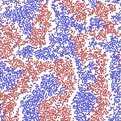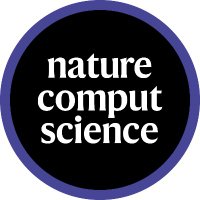
Juno Nam
@junonam_
ML + atomistic simulations | PhD student at @MIT_DMSE | @RGBLabMIT
ID: 1477160150658355200
01-01-2022 06:10:18
171 Tweet
308 Followers
368 Following



Today we are excited to welcome Roberto Covino to give this months Chalmers AI4Science seminar. Join us in Analysen on the Chalmers Johanneberg Campus this afternoon at 3pm or on zoom. For more details see psolsson.github.io/AI4ScienceSemi…


We often think of an "equilibrium" as something standing still, like a scale in perfect balance. But many equilibria are dynamic, like a flowing river which is never changing—yet never standing still. These dynamic equilibria are nicely described by so-called "detailed balance"


New Paper Alert! "Thermodynamic Interpolation: A generative approach to molecular thermodynamics and kinetics" introduces Thermodynamic Interpolation (TI) for generating and transforming equilibrium statistics with temperature control! 🌡️ led by Selma Moqvist and Weilong Chen


Super excited to preprint our work on developing a Biomolecular Emulator (BioEmu): Scalable emulation of protein equilibrium ensembles with generative deep learning from Microsoft Research AI for Science. #ML #AI #NeuralNetworks #Biology #AI4Science biorxiv.org/content/10.110…



Excited to be at #NeurIPS2024 🚀 I will share prelim results: Improving long-term rollout of neural operators with flow matching-inspired correction ml4physicalsciences.github.io/2024/files/Neu… Learning PDEs (for frontal polymerization) with differentiable simulations openreview.net/pdf?id=5tzkzJ2… 1/2


📢Muratahan Aykol, Ekin Dogus Cubuk and colleagues from Google DeepMind introduce a computational approach to predict the most likely crystallization products from amorphous precursors, which has the potential to help with the synthesis of new materials. nature.com/articles/s4358…

Thrilled to share my recent work with Sergey Ovchinnikov, Gabriel Rocklin, Kotaro Tsuboyama, and Justas Dauparas: biorxiv.org/content/10.110… (1/9)

📢Out now! Hao Tang and colleagues from DMSE at MIT and MIT Nuclear Science and Engineering introduce MEHnet, a deep learning method for molecular electronic structures that can predict a host of molecular properties. nature.com/articles/s4358… 🔓rdcu.be/d4Zd5











